SPAIN
Barcelona

Barcelona
Barcelona
The sophisticated and stylish city of Barcelona is one of Spain's most popular cities, second in size to Madrid. Barcelona has something for everyone and although the city is very large, it is surprisingly easy to get around. A city trip to Barcelona is very popular. Barcelona is the capital of Catalonia. The city is the seat of the Generality of Catalonia and the Parliament of Catalonia and the Supreme Council.
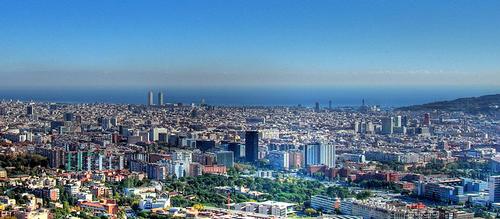 Panorama BarcelonaPhoto: Frank Muller CC 2.0 Generic no changes made
Panorama BarcelonaPhoto: Frank Muller CC 2.0 Generic no changes made
Location
Barcelona is located on the Mediterranean coast between the mouths of the rivers Llobregat and Besòs. Barcelona is 160 km south of the Pyrenees. Barcelona spreads over a land area of 100.4 square kilometers. The city has 4.5 km of beaches. Barcelona has 1,593,075 inhabitants.
Weather
The climate in Barcelona is typically Mediterranean, with cool winters and hot summers. July and August are the hottest months of the year and temperatures can reach 37°C. Due to its location close to the sea, Barcelona can also feel quite humid even with the warm weather, although the sea breeze usually brings refreshment.
From November to April it is advisable to bring a warm sweater, jacket or coat. In the middle of winter, around January and February, it is quite cold in Barcelona. Although January sometimes works out well. From March the weather starts to warm up considerably. May is a particularly pleasant time to take a city trip to Barcelona.
History
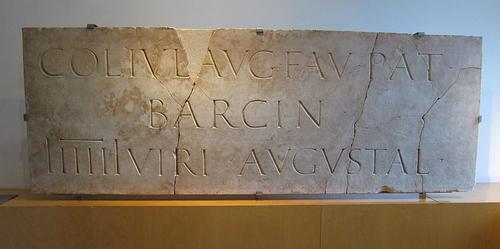 Roman inscription BarcelonaPhoto: Jaycross CC 2.0 Generic no changes made
Roman inscription BarcelonaPhoto: Jaycross CC 2.0 Generic no changes made
The origins of the city of Barcelona are unclear. Remains from the late Neolithic have been found in the coastal plain near Barcelona. Barcelona was called a Roman colony of Barcino, under the reign of Emperor Augustus. The city was conquered by the Visigoths in the 5th century and the Moors took power in the 8th century.
Barcelona experienced an era of prosperity in all aspects of city life during the Middle Ages. This boom came to an end in the 15th century, after the marriage of Ferdinand II of Aragon and Isabella of Castile in 1469. As a result of the union of the two main kingdoms of the Iberian peninsula, the center of political power moved to Madrid. Barcelona was completely destroyed during the time of the Catalan Republic 1640-1652 and also during the War of the Spanish Succession in 1714.
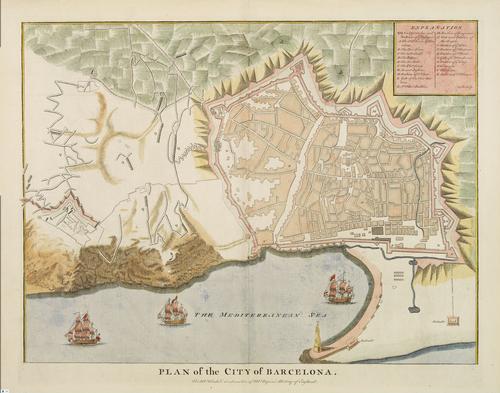 Map Barcelona from 1700Photo: Public domain
Map Barcelona from 1700Photo: Public domain
De stad ontwikkelde zich tijdens de industriële revolutie in de 19e eeuw en introduceerde vele nieuwe industrieën. Het is een van de eerste regio's in continentaal Europa waar de industrialisatie grote veranderingen tot stand bracht. In 1923 was er in Spanje en Catalonië een periode van dictatuur. Primo de Riberia was aan de macht gekomen. Er ontstonden werknemersorganisaties die de culturele en politieke rechten van Catalonië op de kaart probeerden te zetten. Toen Primo de Ribera in 1931 ten val kwam herwon Barcelona haar autonomie en ontstond de eerste Catalaanse Republiek. Deze werd geleid door Lluis Companys, die tot president werd verkozen.
In 1936 there was an outbreak of rebellion in Spain due to political unrest and the economic recession. The powerlessness of the government created extreme ideologies, including the fascist, led by Francisco Franco. This eventually led to the bloody Spanish Civil War. The Republicans (Catalans) were defeated and there was a ban on manifesting a Catalan identity. Franco's death in 1975 sparked a period of democratization across Spain. Barcelona got a huge revival with the organization of the 1992 Summer Olympics. Since that time it has been a very busy city with many tourists from home and abroad, who make a city trip to Barcelona.
Sights
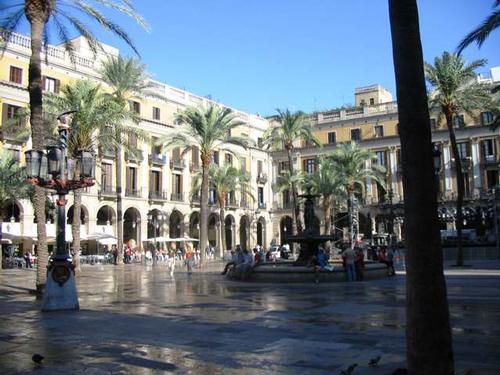 Barcelona Plaza RealPhoto: Mac9 CC 3.0 Unported no changes made
Barcelona Plaza RealPhoto: Mac9 CC 3.0 Unported no changes made
Barcelona has a huge number of attractions that make a city trip worthwhile. Tourist attractions in Barcelona include the Parc Güell, with some beautiful creations by the world famous Antoni Gaudi. The Ramblas is Spain's most famous street, lined with trees and popular with tourists and locals alike. The Parc de la Ciutadella is the perfect place to relax in the sun. The Plaza Real is a particularly beautiful and stately courtyard.
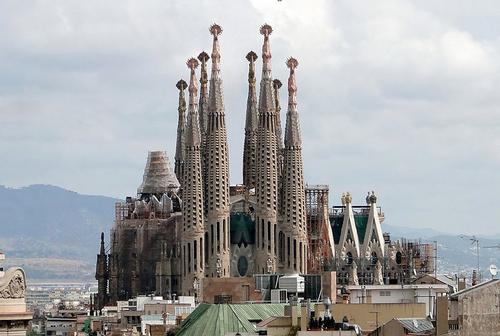 Barcelona Sagrada FamiliaPhoto: Bernard Gagnon CC 3.0 Unported no changes made
Barcelona Sagrada FamiliaPhoto: Bernard Gagnon CC 3.0 Unported no changes made
La Sagrada Familia is Gaudí's towering cathedral, which has become a symbol of Barcelona. The Casa Mila is a special building designed by Gaudi. You can visit the roof of this building with its special chimneys. The Eixample is a 19th century urban extension with stylish avenues and mansions.
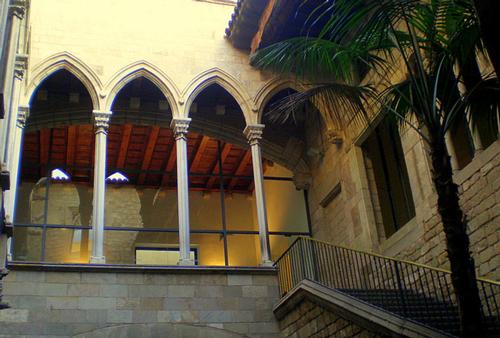 Picasso Museum BarcelonaPhoto: Jaume Meneses CC 2.0 Generic no changes made
Picasso Museum BarcelonaPhoto: Jaume Meneses CC 2.0 Generic no changes made
There are also many important museums and galleries in Barcelona, the most popular being the Picasso Museum with a large collection of paintings and ceramics created by the famous artist. The museum occupies four of the medieval stone mansions on Carrer de Montcada. The buildings alone are worth admiring, with an impressive courtyard and internal staircase. There is also a wealth of information about Picasso's life.
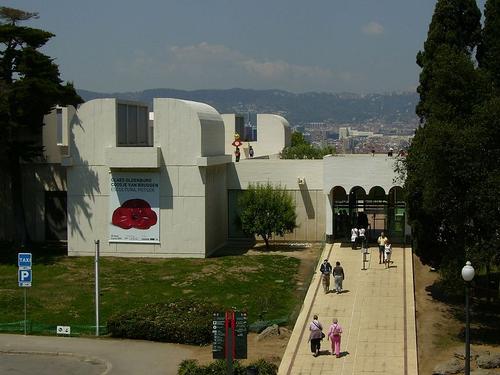 Fundcio Joan Miro BarcelonaPhoto: Puigalder in the public domain
Fundcio Joan Miro BarcelonaPhoto: Puigalder in the public domain
The Museum of the History of the City, which describes the entire history of the city. The Museu Nacional d'Art de Catalunya with a collection of Romanesque art, including murals of the Romanesque churches. The Museu d'Art Contemporani de Barcelona includes foreign works. The Fundació Joan Miro museum showing the works of Miro The Fundació Antoni Tàpies has a collection of Tàpie's works and the work of architect Antoni Gaudí.
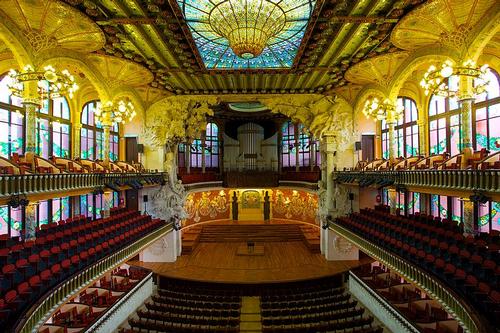 Palau de la Musica Catalana BarcelonaPhoto: Jiuguang Wang CC 3.0 Spain no changes made
Palau de la Musica Catalana BarcelonaPhoto: Jiuguang Wang CC 3.0 Spain no changes made
The Palau de la Música Catalana was built between 1905 and 1908 by the architect Lluís Domènech i Montaner. The Palau de la Música Catalana is an architectural jewel of the Catalan Arts Nouveau, the only concert hall of this style listed by UNESCO as a World Heritage Site. The building is designed around a central metal structure covered with glass, which allows natural light to pass through and which brings together all the decorative arts: sculpture, mosaic, stained glass and ironwork.
Tips
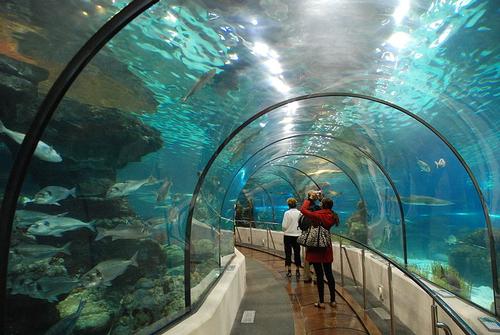 Aquarium BarcelonaPhoto: Paul Hermans CC 3.0 Unported no changes made
Aquarium BarcelonaPhoto: Paul Hermans CC 3.0 Unported no changes made
Tourists on a Barcelona city trip can also enjoy the beach. Including the Platja de Sant Sebastià on the outskirts of Barcelona. Families find the marine life in the Aquarium particularly attractive. The Barcelona Zoo is suitable for visitors of all ages and you can easily spend a day there and then perhaps end the day at the Port Olimpic (Olympic Harbor) for an evening meal.
Useful links Barcelona
BBC Country ProfilesWorld Fact Book Explore all Countries
How to call
Last updated December 2025
Copyright: Team - The World of Info